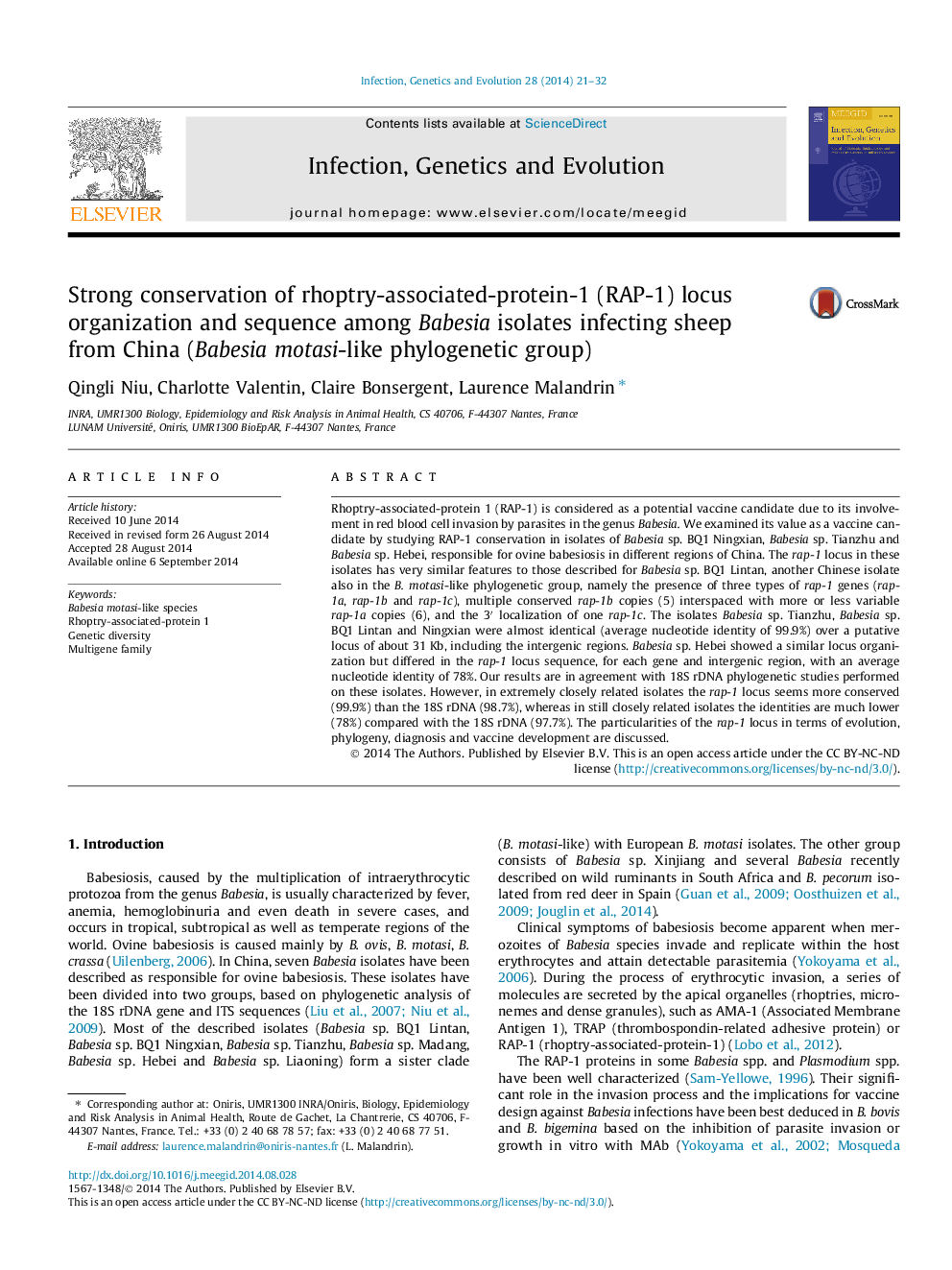| Article ID | Journal | Published Year | Pages | File Type |
|---|---|---|---|---|
| 5909375 | Infection, Genetics and Evolution | 2014 | 12 Pages |
Abstract
Rhoptry-associated-protein 1 (RAP-1) is considered as a potential vaccine candidate due to its involvement in red blood cell invasion by parasites in the genus Babesia. We examined its value as a vaccine candidate by studying RAP-1 conservation in isolates of Babesia sp. BQ1 Ningxian, Babesia sp. Tianzhu and Babesia sp. Hebei, responsible for ovine babesiosis in different regions of China. The rap-1 locus in these isolates has very similar features to those described for Babesia sp. BQ1 Lintan, another Chinese isolate also in the B. motasi-like phylogenetic group, namely the presence of three types of rap-1 genes (rap-1a, rap-1b and rap-1c), multiple conserved rap-1b copies (5) interspaced with more or less variable rap-1a copies (6), and the 3â² localization of one rap-1c. The isolates Babesia sp. Tianzhu, Babesia sp. BQ1 Lintan and Ningxian were almost identical (average nucleotide identity of 99.9%) over a putative locus of about 31Â Kb, including the intergenic regions. Babesia sp. Hebei showed a similar locus organization but differed in the rap-1 locus sequence, for each gene and intergenic region, with an average nucleotide identity of 78%. Our results are in agreement with 18S rDNA phylogenetic studies performed on these isolates. However, in extremely closely related isolates the rap-1 locus seems more conserved (99.9%) than the 18S rDNA (98.7%), whereas in still closely related isolates the identities are much lower (78%) compared with the 18S rDNA (97.7%). The particularities of the rap-1 locus in terms of evolution, phylogeny, diagnosis and vaccine development are discussed.
Keywords
Related Topics
Life Sciences
Agricultural and Biological Sciences
Ecology, Evolution, Behavior and Systematics
Authors
Qingli Niu, Charlotte Valentin, Claire Bonsergent, Laurence Malandrin,
